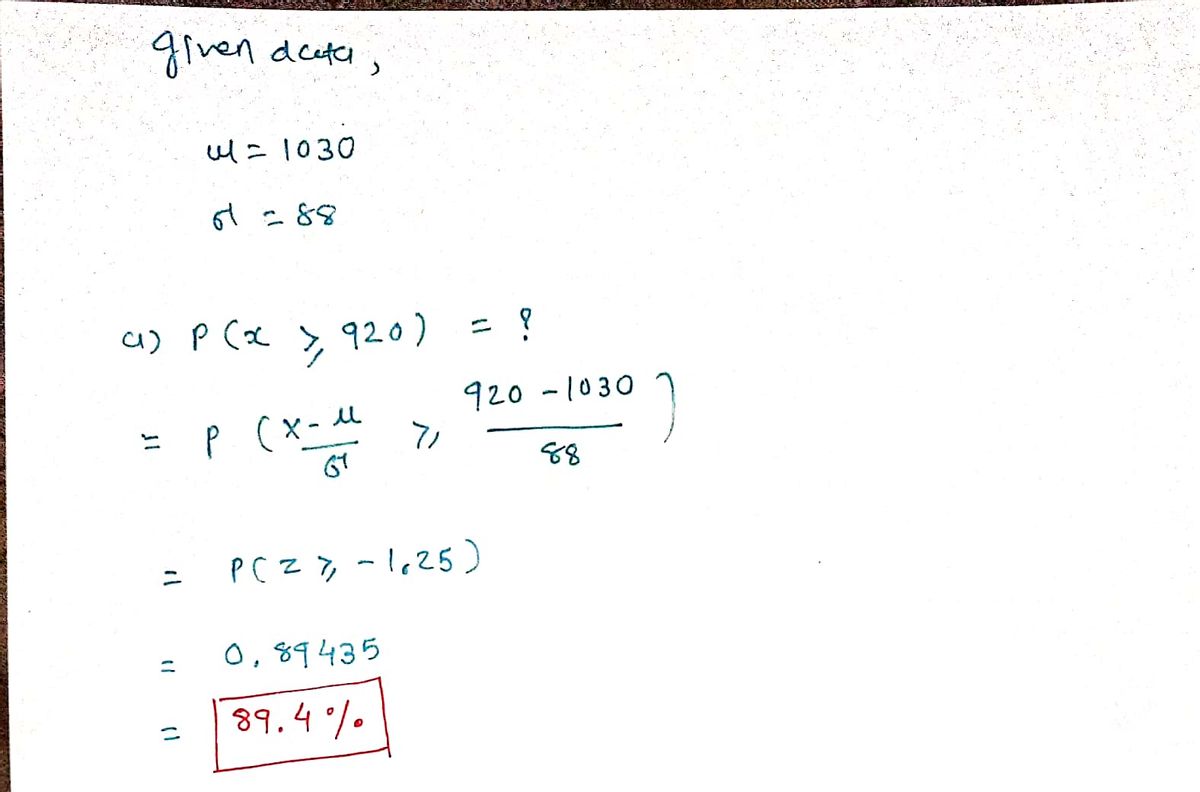Use the table to answer the question. Note: Round z-scores to the nearest hundredth and then find the required A values using the table. A manufacturer of light bulbs finds that one light bulb model has a mean life span of 1030 hr with a standard deviation of 88 hr. What percent of these light bulbs will last as follows? (Round your answers to one decimal place.) (a) at least 920 hr % (b) between 840 and 890 hr %
Continuous Probability Distributions
Probability distributions are of two types, which are continuous probability distributions and discrete probability distributions. A continuous probability distribution contains an infinite number of values. For example, if time is infinite: you could count from 0 to a trillion seconds, billion seconds, so on indefinitely. A discrete probability distribution consists of only a countable set of possible values.
Normal Distribution
Suppose we had to design a bathroom weighing scale, how would we decide what should be the range of the weighing machine? Would we take the highest recorded human weight in history and use that as the upper limit for our weighing scale? This may not be a great idea as the sensitivity of the scale would get reduced if the range is too large. At the same time, if we keep the upper limit too low, it may not be usable for a large percentage of the population!
Use the table to answer the question. Note: Round z-scores to the nearest hundredth and then find the required A values using the table.
A manufacturer of light bulbs finds that one light bulb model has a mean life span of 1030 hr with a standard deviation of 88 hr. What percent of these light bulbs will last as follows? (Round your answers to one decimal place.)
%
(b) between 840 and 890 hr
%

Trending now
This is a popular solution!
Step by step
Solved in 2 steps with 2 images









